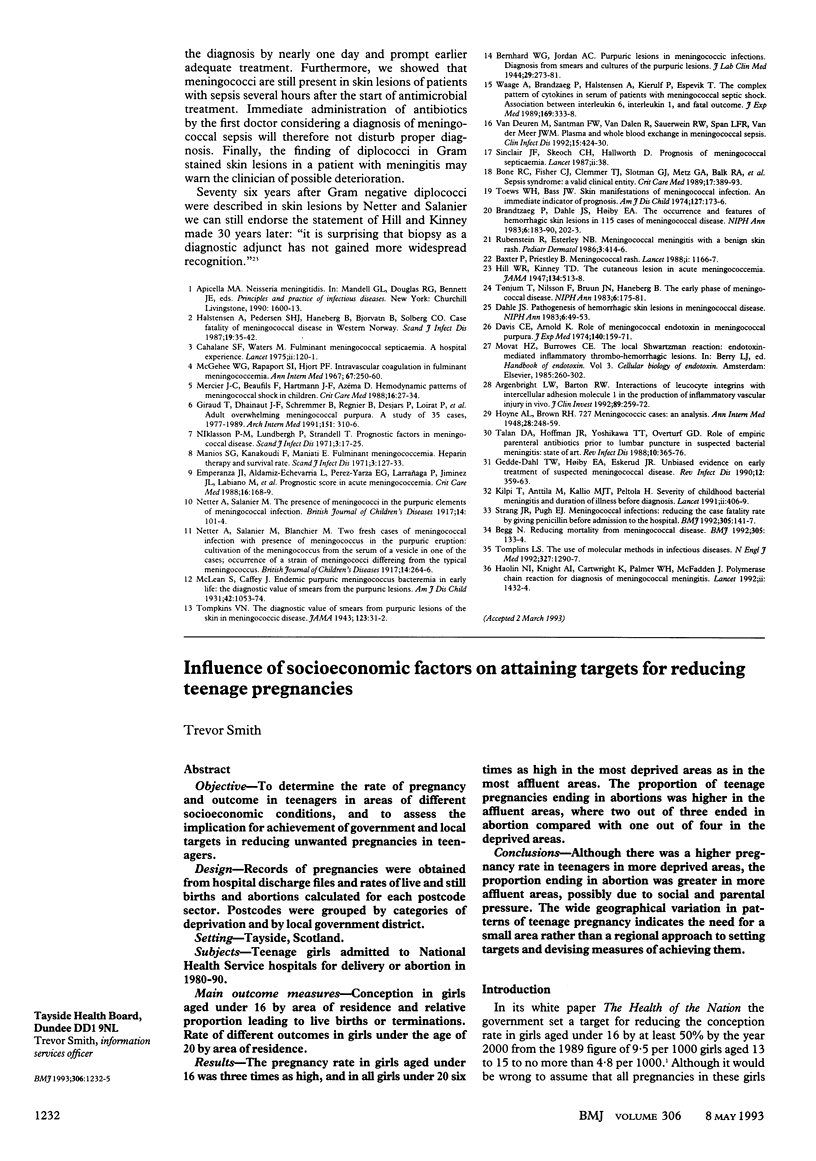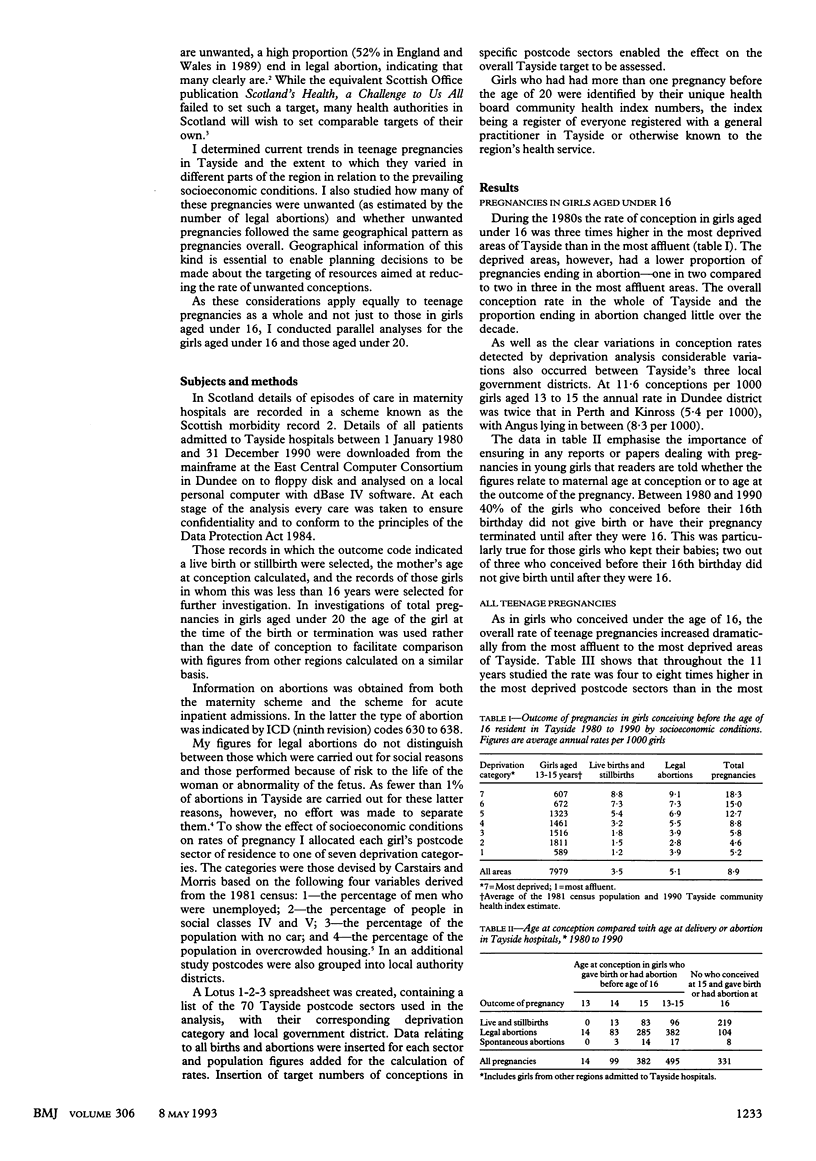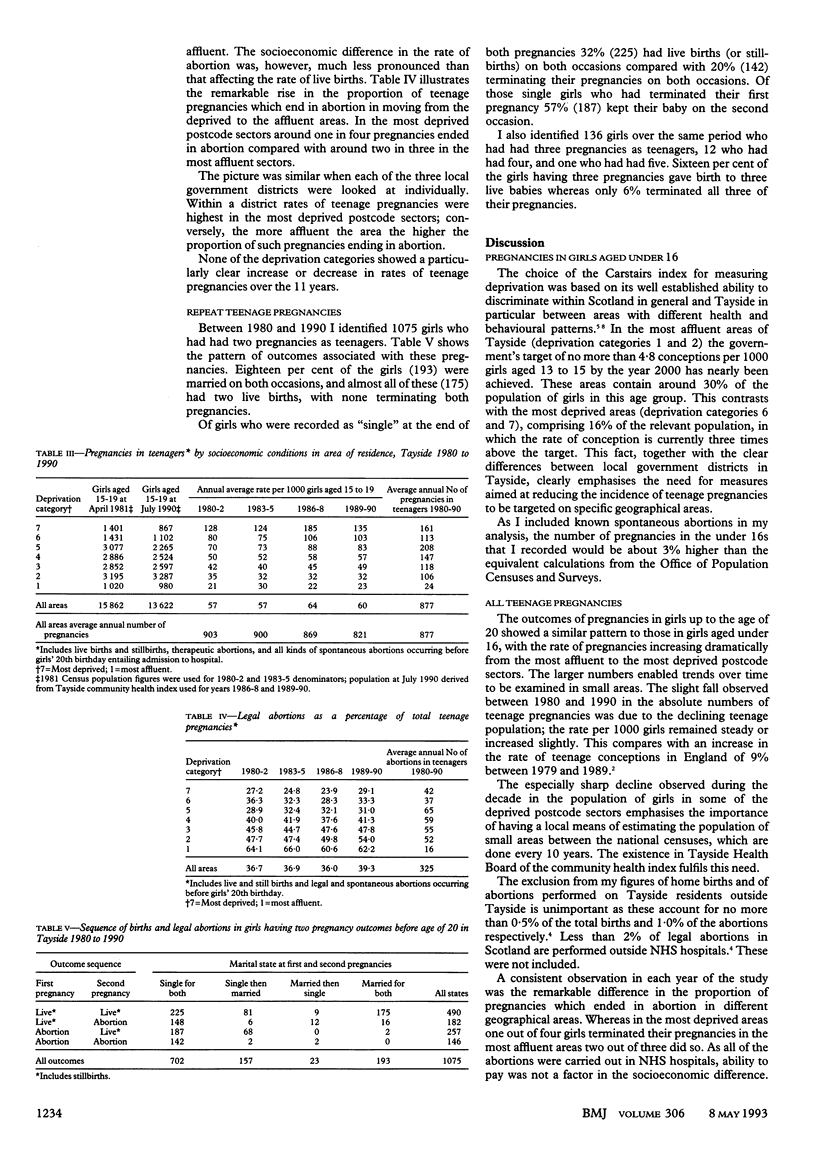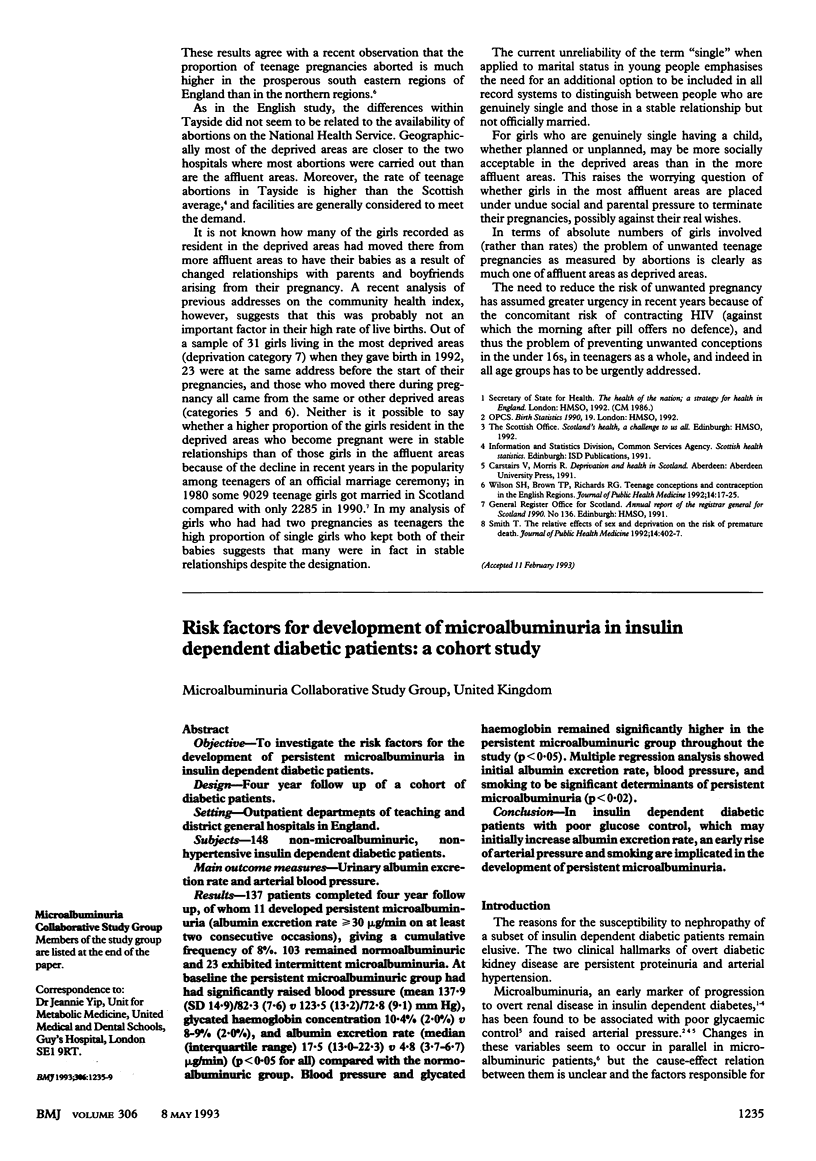Abstract
OBJECTIVE--To determine the rate of pregnancy and outcome in teenagers in areas of different socioeconomic conditions, and to assess the implication for achievement of government and local targets in reducing unwanted pregnancies in teenagers. DESIGN--Records of pregnancies were obtained from hospital discharge files and rates of live and still births and abortions calculated for each postcode sector. Postcodes were grouped by categories of deprivation and by local government district. SETTING--Tayside, Scotland. SUBJECTS--Teenage girls admitted to National Health Service hospitals for delivery or abortion in 1980-90. MAIN OUTCOME MEASURES--Conception in girls aged under 16 by area of residence and relative proportion leading to live births or terminations. Rate of different outcomes in girls under the age of 20 by area of residence. RESULTS--The pregnancy rate in girls aged under 16 was three times as high, and in all girls under 20 six times as high in the most deprived areas as in the most affluent areas. The proportion of teenage pregnancies ending in abortions was higher in the affluent areas, where two out of three ended in abortion compared with one out of four in the deprived areas. CONCLUSIONS--Although there was a higher pregnancy rate in teenagers in more deprived areas, the proportion ending in abortion was greater in more affluent areas, possibly due to social and parental pressure. The wide geographical variation in patterns of teenage pregnancy indicates the need for a small area rather than a regional approach to setting targets and devising measures of achieving them.
Full text
PDF



Selected References
These references are in PubMed. This may not be the complete list of references from this article.
- Smith T. The relative effects of sex and deprivation on the risk of early death. J Public Health Med. 1992 Dec;14(4):402–407. doi: 10.1093/oxfordjournals.pubmed.a042781. [DOI] [PubMed] [Google Scholar]
- Wilson S. H., Brown T. P., Richards R. G. Teenage conception and contraception in the English regions. J Public Health Med. 1992 Mar;14(1):17–25. [PubMed] [Google Scholar]


